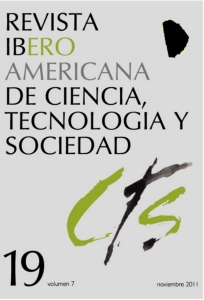The problems of separating the artificial from the living in order to understand artifactual beings
DOI:
https://doi.org/10.52712/issn.1850-0013-738Keywords:
living, artificial, Simondon, LatourAbstract
This paper delivers a critical analysis about separating the artificial from the living in order to understand artifactual beings. Influenced by Gilbert Simondon and Bruno Latour, the authors of this article propose, on one hand, to think about artifactual beings without relying on that dichotomy, and, on the other, to study the technical phenomenon as a quasi-object with previous individual existence to the emergence of human being.
Downloads
References
LATOUR, B. (2007): Nunca fuimos modernos, Buenos Aires, Siglo XXI.
MEILLASSOUX, Q. (2008): After Finitude: an essay on the necessity of contingency, Londres, Continuum.
SCHELLING, F. W. J. (2005): Sistema del idealismo trascendental, Barcelona, Antrophos, p. 166.
SIMONDON, G. (2009): La individuación a la luz de las nociones de forma y de información, Buenos Aires, Cactus - La cebra.
VACCARI, A. (2010): “Vida, técnica y naturaleza en el pensamiento de Gilbert Simondon”, Revista Iberoamericana de Ciencia, tecnología y Sociedad -CTS, vol. 5, nº 14. Disponible en: http://www.revistacts.net/files/Volumen%205%20%20N%C3%BAmero%2014/Vaccari_edit.pdf.
Downloads
Published
How to Cite
Issue
Section
License
Copyright (c) 2024 CC Attribution 4.0

This work is licensed under a Creative Commons Attribution 4.0 International License.
All CTS's issues and academic articles are under a CC-BY license.
Since 2007, CTS has provided open and free access to all its contents, including the complete archive of its quarterly edition and the different products presented in its electronic platform. This decision is based on the belief that offering free access to published materials helps to build a greater and better exchange of knowledge.
In turn, for the quarterly edition, CTS allows institutional and thematic repositories, as well as personal web pages, to self-archive articles in their post-print or editorial version, immediately after the publication of the final version of each issue and under the condition that a link to the original source will be incorporated into the self-archive.











